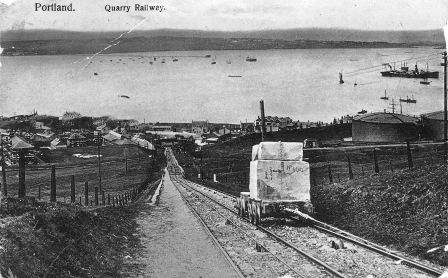




Western end of Chesil Beach (or Bank) West Weares in background

Easton and Church Ope Railway, opened 1 September 1902. Easton was closed from 11 November 1940 to 1 January 1945 following air raid damage. Although the station closed to passengers in 1952 regular freight kept the line in use until a decade or so later.
(Info. from a Wikipedia entry)
I bought the passenger ticket off e bay. Both stations are long gone and are not likely to be resurrected.
Houses top left were prison warders accommodation, now demolished
Portland Prison opened in 1848. Convicts spent their time hacking stone out of the quarries and building the breakwaters round Portland Harbour.
Portland's modern harbour was first built by the Navy (with convict assistance-note the date above) from 1849 -1872. Two more breakwaters were added in 1906. (Info from a Wikipedia entry)
It wasn't only the convicts who were doing 'hard labour'. The Royal Navy wasn't known for its generosity toward the men, and boys, who manned the ships. The boys in this picture are scrubbing their hammocks!
The boom (bottom right) was laid across the harbour entrance in times of peril and later HMS Hood was sunk there to keep the enemy out should he be bold enough to attempt a raid. These pictures came from a newspaper of the time, dated 1891
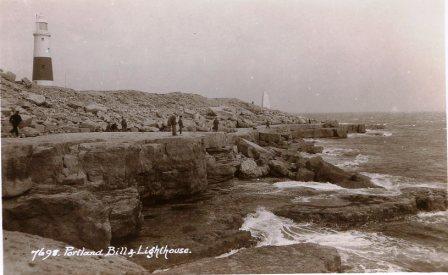
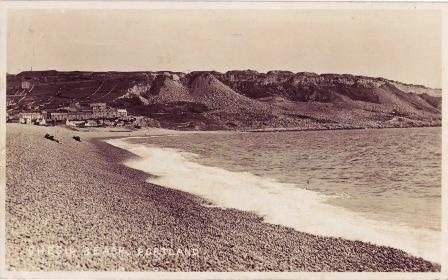


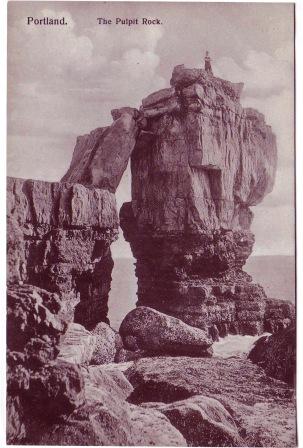
all photos late 1800s
As much photographed as the view along the Chesil at the northern end of the Isle, the Pulpit Rock is at the southern end near the lighthouse. Needless to say there must be thousands of locals and visitors who can say 'I stood up there on top of the Pulpit' . It isn't, however, quite as easy at it looks
The stone heaps are partly natural wastage as the vertical faces of Portland limestone are underlain by the Kimmeridge Clays which makes for a rather uncertain foundation. Much of the stone though is tippage from the old quarry workings. Quarries still abound on Portland as the limestone is much needed particularly for restoration of buildings in prestigious cities such as London. Life does, however, get ever more difficult for the quarries (as it also does in Purbeck) as houses are built all over the Isle and vociferous inhabitants protest at expansion and even original quarrying
The quarrying was going on when the houses were built and purchased so it could hardly, surely, have come as a surprise to find that people still earned their living from them and wanted to continue doing so
Newton's Cove and West Weares, much the same in 1930 as in 1900






Portland Castle 1786
Portland Heights 1866
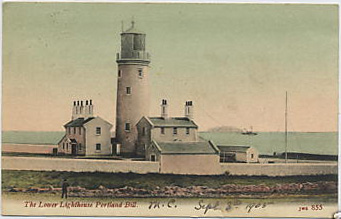
Lower Lighthouse Portland 1890
1930s
Click on picture for more information
Built by Henry VIII in 1540

Portland Castle 1950s (Ministry of Works)
1900
1900
1900

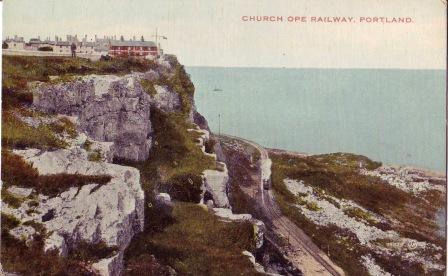

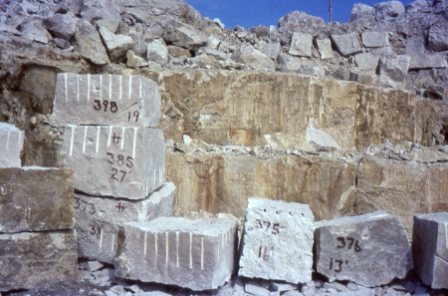





The Isle of Portland is chiefly famous for its long history of quarrying the excellent building stone it is composed of. The link here is to a paper written on the subject by a quarry manager whose family have been engaged in the business of winning stone for several generations. The photographs below were taken in the 1960s by Mrs Maureen Keats (see Index)
Broadcroft Whitbed blocks 1964
Broadcroft breezeblocks, grit in cement 1964
Broadcroft crusher 1964
Broadcroft crusher 1964
Broadcroft stone for St Paul's Cathedral, London 1964
Broadcroft Grove Quarry, Portland June 1961


Easton Masonry Works and Diamond Saw 1964


Portland Isle Quarry
Whitbed (left) and Whitbed with Purbeck above (right)
1964

Perryfield: roach for polished stone, crusher for gravel, cement and agrilime 1964
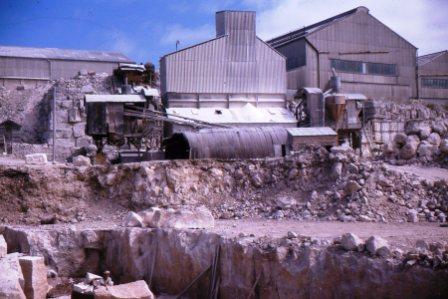

Perryfield: Lower Purbeck above Portland Stone, Friars Ltd view west 1964

Dorset Limestone Ltd Stonetex 1964


Broadcroft: stalactites in Whitbed 1964
from the Verne 6-9-65

Chesilton and harbour 1964


from the Verne 1964

looking east 29-8-64

1962

1900: Rufus Castle and Church Ope Cove. Rufus Castle was probably built for William II (called "Rufus" for his red hair). It is likely that the structure we see today was the keep of a larger castle. Little remains of that first castle, with the possible exception of the arch that spans the path from Church Ope Road.
In 1142, Robert, Earl of Gloucester, captured the castle from King Stephen on behalf Empress Maud, and a license to rebuild was granted in 1258. The castle was rebuilt in the 15th century, and much of what remains dates from this time. (info from Britain Express)
THE MERCHANTS' RAILWAY, Portland was authorised by an Act of Parliament in 1825, and opened in Oct, 1826, The railway was constructed for the conveyance of stone from Tophill to the quays and the Weymouth and Portland Railway. (Info. from Portland Year Book)
1890s
Pulpit rock 29-8-64
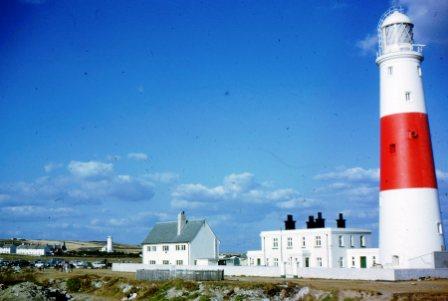
Upper and Lower Lighthouses 29-8-64
V

Raised Beach east 29-3-69
The following photographs were part of a further collection, mainly taken by William Stanton, and also found in Dorset County Museum. Unfortunately they were mostly unlabelled though the time period was obvious from various aspects as were, of course, the locations. Apart from one Purbeck Quarry, which was unmistakable anyway, there were only, for instance, Portland or Purbeck, and sometimes nothing at all, as identification. They were still valuable material as other pages will also testify



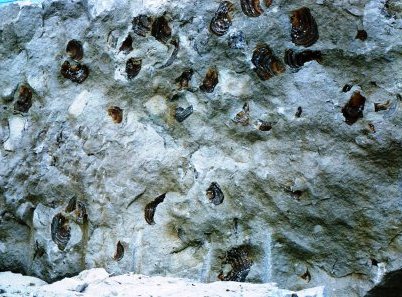
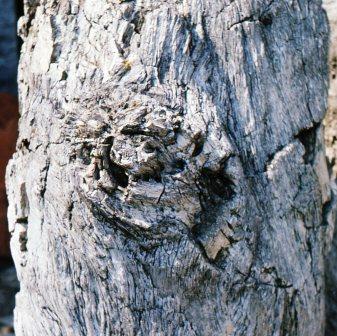


Roach
This is probably the fossil tree in the grounds of Portland Heights hotel (now called The Heights)
above Church 'Ope Cove
possibly Portland Museum


May 1985



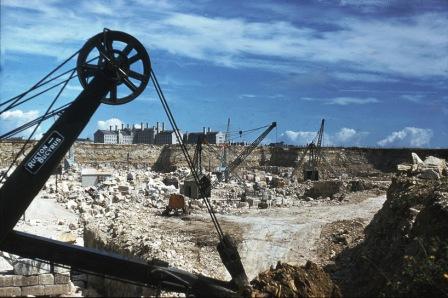

The following photographs were taken by Prof. Michael House, part of a collection of some 1200 slides given to the Dorset GA Group by Mrs Felicity House
1989
July 1983
SOUTH DORSET COAST
PORTLAND
Exmouth to Milford on Sea
including the East Devon & Dorset World Heritage Site
1800-2000
page updated: February 16, 2012
< < < Chesil
Weymouth > > >


1960s

